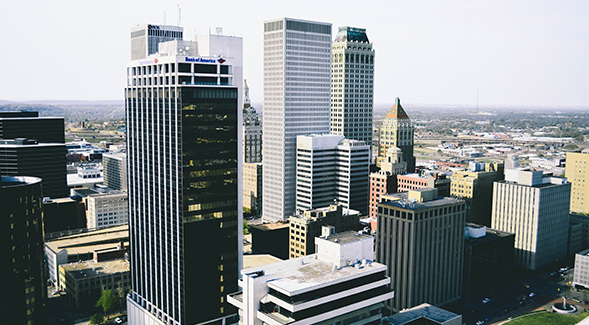New Study Investigates COVID-19 Risks at Indoor Events
The co-authored study is first to explore the impact of President Donald Trumps 2020 presidential campaign kickoff rally on physical distancing and COVID-19 related outcomes.

“Our findings provide little evidence that the president’s Tulsa rally led to more rapid COVID-19 case growth in Tulsa County, its border counties, or the State of Oklahoma.”
Eighteen days after President Donald Trump’s June 20 rally in Tulsa, Oklahoma, researchers revealed data concluding that the rally did not result in an expected COVID-19 “superspreader” threat.
The study, released last week by the National Bureau of Economics Research, is the first to explore whether the event contributed to a surge in the spread of COVID-19.
The working paper, “Did President Trump's Tulsa Rally Reignite COVID-19? Indoor Events and Offsetting Community Effects,” is co-authored by researchers from San Diego State University's Center for Health Economics & Policy Studies (CHEPS), Bentley University, the University of Colorado, Denver, and the University of California San Diego.
“Our findings provide little evidence that the president’s Tulsa rally led to more rapid COVID-19 case growth in Tulsa County, its border counties, or the State of Oklahoma,” said SDSU researcher Joseph Sabia, director of CHEPS. “Moreover, when we use anonymized smartphone data to track likely rally goers to their home counties, we do not detect spikes in COVID-19 cases in those areas that drew larger numbers of rally attendees.”
To reach their conclusions, the researchers examined impacts of the rally on travel into census block groups where the rally took place. Data from the Centers for Disease Control and Prevention (CDC) was used to explore whether the Trump rally spurred COVID-19 case growth.
The study suggests that there were important offsetting effects in Tulsa, specifically, that mitigated an increase in COVID-19 cases. Fear of violence may have deterred people from heading to the downtown area where the rally was held which may explain research findings indicating no net decline in stay-at-home behavior in Tulsa County on the day of the event, Sabia explained. Simply put, despite the rally, many Tulsa-area residents adhered to stay-at-home orders.
Moreover, many restaurants, bars, and other businesses voluntarily closed in the downtown area in response to the rally. Many public buildings and local roads were also closed. Rally attendees likely displaced usual downtown activities in restaurants, bars, and entertainment venues, which could themselves have contributed to COVID-19 spread, the researchers explained in the report.
Additionally, while mask-wearing during the campaign rally was scant, as widely reported, and physical distancing largely absent during the event itself, those entering Tulsa’s BOK Center had their temperatures taken prior to entry — a practice not yet commonly used at restaurants and bars.
“Our results do not suggest that all large indoor events are safe, rather, they tell us that offsetting community effects in response to events such as this rally may mute COVID-19 transmission,” Sabia said. “This study is a very useful companion piece to the CHEPS Black Lives Matter study, which reached a similar conclusion.” In that study, researchers determined that while it was possible the protests could cause an increase in the spread of COVID-19 among those in attendance, the protests had little effect on the spread of COVID-19 for the entire population within those counties.
“Our work emphasizes the importance of offsetting behavioral effects in understanding the community health effects of large gatherings,” Sabia said. “Our findings appear to imply that indoor events may not be as dangerous to public health as previously thought, particularly if crowd size is relatively modest, the event is accompanied by substantial publicity surrounding the importance of mitigating behaviors (i.e. mask-wearing), and if indoor attendees have their temperature taken upon entry, as they were at the Trump rally.”
Research funding support from the Center for Health Economics & Policy Studies (CHEPS), includes grants received from the Troesh Family Foundation and the Charles Koch Foundation.



